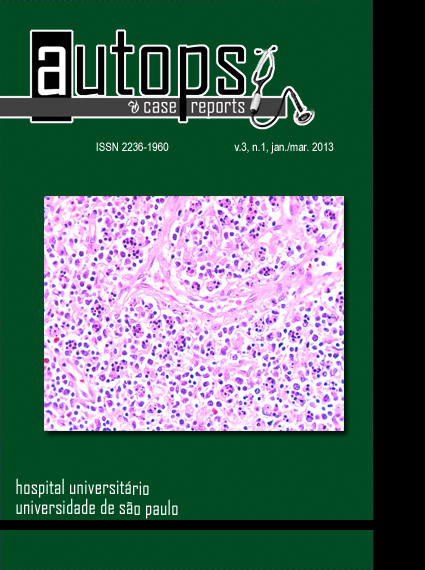Late infra-renal aortic graft infection: a fearsome complication
DOI:
https://doi.org/10.4322/acr.%25y.58876Keywords:
Aortic Aneurysm, Vascular Grafting, Infection, DiagnosisAbstract
Since the 1950s, aortic graft infections (AGIs) constitute one of the most feared complications after reconstructive vascular surgery. This complication is not frequent, ranging from 1% to 2% in the recently reported series; however, the high rate of death and morbidity after therapeutic attempts justifies its dreadful fame. The majority of cases occur during the first month after surgery. Staphylococcus aureus is the cause of 70% of the early infection cases. Late infections, on the other hand, are even rarer, showing a strong relationship with low virulence microorganisms, where Staphylococcus epidermidis is the main cause. Gram-negative bacteria are also observed in late infections, mainly when an aortic or graft enteric fistula is present. Treatment modalities are plenty, but still debatable. The authors report a case of a woman who was operated on 6 years ago for a reconstructive aortic aneurysm with the implantation of an infrarenal Dacron graft in the aorto bifemoral position. She looked for medical assistance with a 2-month history of weight loss, abdominal/back pain, and fever. Her clinical status rapidly deteriorated. A computed tomography of the abdomen disclosed the diagnosis of an AGI. The patient was promptly treated with antibiotics. Surgery was undertaken to explant the infected graft and another graft was placed into the axillobifemoral position. Culture from the infections site was negative. After surgery the patient quickly developed refractory septic shock and died immediately post-operatively.Downloads
Download data is not yet available.
Downloads
Published
2013-03-28
Issue
Section
Article / Clinical Case Report
License
Copyright
Authors of articles published by Autopsy and Case Report retain the copyright of their work without restrictions, licensing it under the Creative Commons Attribution License - CC-BY, which allows articles to be re-used and re-distributed without restriction, as long as the original work is correctly cited.
How to Cite
Campos, F. P. F. de, Silva, E. S., De Luccia, N., Ribeiro, V. H., Martines, B. M. R., & Martines, J. A. dos S. (2013). Late infra-renal aortic graft infection: a fearsome complication. Autopsy and Case Reports, 3(1), 45-51. https://doi.org/10.4322/acr.%y.58876



